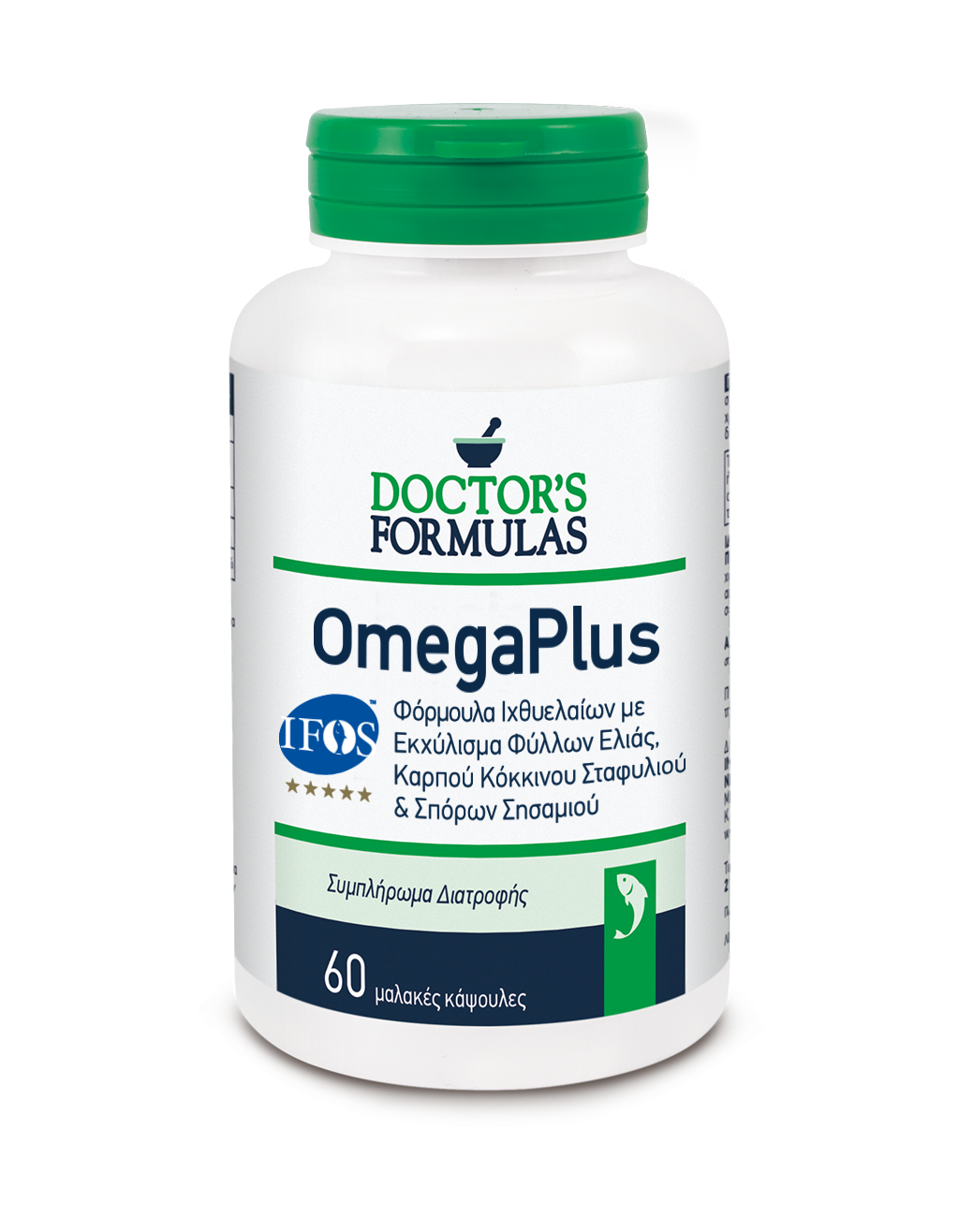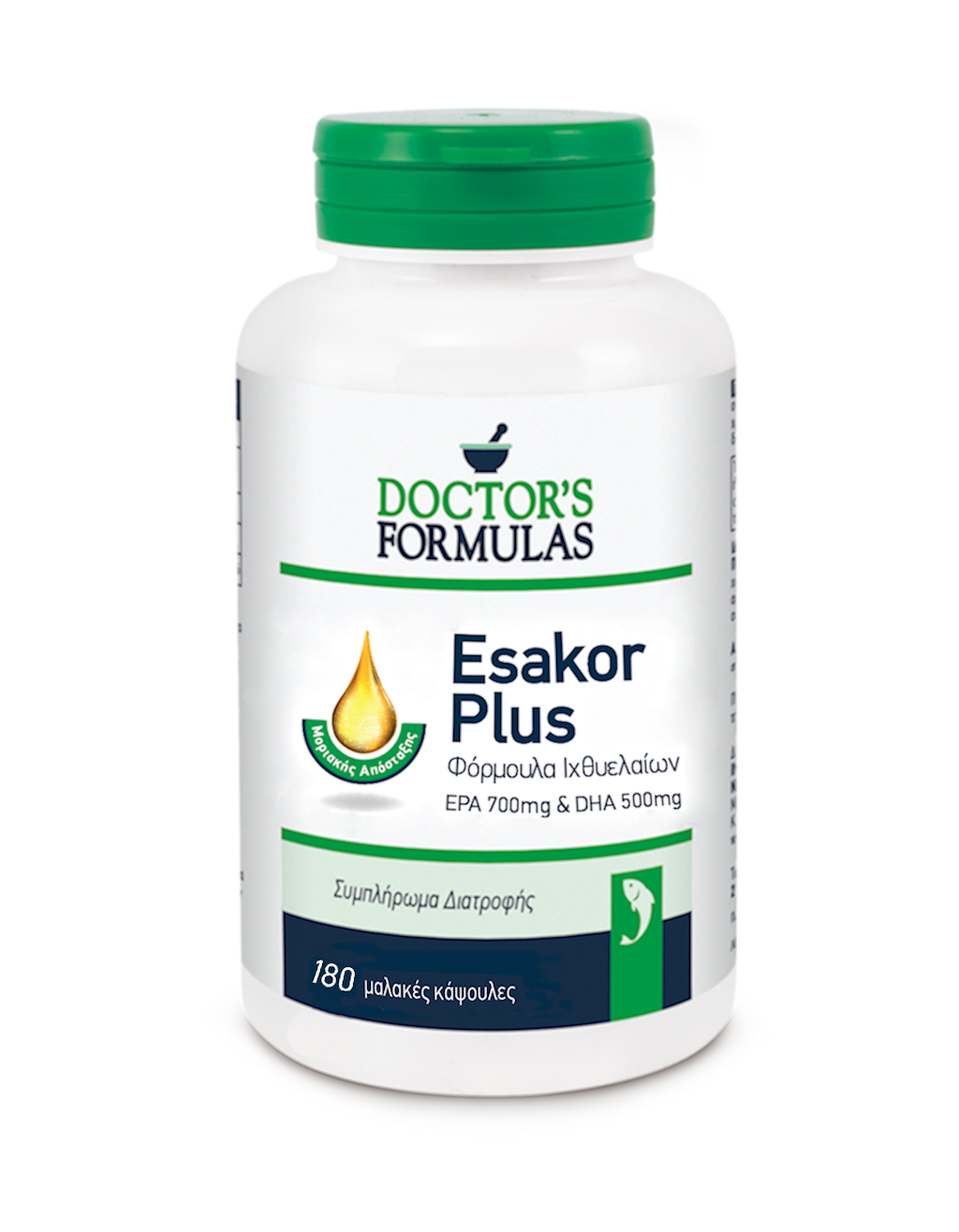The beneficial properties of Omega 3 fatty acids
What are Omega 3 Fatty Acids?
Long-chain polyunsaturated Omega 3 are essential fatty acids which form an integral part of the cell membranes throughout the body, thus significantly affecting the function of the receptors of these membranes.
The most important representatives of Omega 3 fatty acids are two, EPA or else eicosapentaenoic acid and DHA or else docosahexaenoic acid. Indeed, DHAs are an essential component of all cell membranes and are found in abundance in the brain and the retina.
EPA and DHA are considered by many researchers to be beneficial in preventing and coping with many health problems that concern modern people.
Today's industrially grown diet, based mainly on vegetable oils, is deficient in Omega 3, while it is rich in Omega 6 and this results in a disturbance in the balance between them.
This imbalance disrupts the body because it prevents Omega 3 from exerting their beneficial effects and is therefore a precursor to various diseases.
Beneficial health benefits come from omega 3 fatty acids supplementation.
Thousands of medical studies have demonstrated their beneficial role in the normal functioning of the heart, brain and eyes.
They also participate in inflammatory processes by regulating inflammation, because they form the expression of the genes associated with it. Essentially Omega 3 fatty acids reduce cytokines and the NF-κB pathway that promote inflammation and increase the expression of MGST1 protein found in the endoplasmic reticulum and in the external mitochondrial membrane and is involved in preventing inflammation because it protects against the oxidant stress.
Omega 3 has the ability to reduce triglycerides and promote good blood circulation by inhibiting platelet activation by lipoxygenase products.
What is the relationship between Omega 3 and the normal functioning of the brain
About 70% of the brain consists of fats, a large part of which is Omega 3! They are called brain food and are essential for the development and normal functioning of the brain. In particular, DHAs are an essential component of the brain and eyes.
It is so necessary that during pregnancy the body feeds the fetus with the mother's DHA and then maintains elevated levels, even in breast milk. The amount of DHA in the brain increases 30 times between the first 24 weeks and 2 years of life. However, most children do not take enough DHA from their diet.
Scientific studies suggest a direct relationship between low levels of DHA and poor learning and behavior.
In particular, the Dolab study done in 2012 found that DHA is a safe way to improve memory and behavior in healthy but low-school children.
Also, a previous study by the same investigators this year in Durham found that the increase in Omega 3 levels in children between 5 and 12 years of age significantly improved their reading, spelling and behavior over a period of three months.
The role of EPA and DHA in heart health
Supplemental administration of omega 3 fatty acids can significantly reduce the risk of heart disease.
It is now scientifically proven that polyunsaturated fatty acids reduce inflammation, which can damage blood vessels and lead to heart disease and stroke.
They also have the ability to reduce elevated cholesterol levels and reduce triglycerides and can inhibit plaque accumulation in the arteries.
They can be incorporated into the bilayer of the phospholipids of the cell membranes and affect the fluidity and signaling of the membranes. They form the function of membrane ion channels, such as L and L channels, and can thus reduce the risk of irregular heartbeat (arrhythmias) and also act as a preventative.
In addition, Omega 3 prevents the conversion of arachidonic acid to proinflammatory eicosanoids, acting as an alternative substrate for cyclooxygenase or lipoxygenase, resulting in the production of fewer strong byproducts.
Finally, enzymatically oxygenated metabolites derived from Omega 3 have recently been identified as anti-inflammatory mediators (resolvins, lipoxins, etc.) which contribute to the beneficial effects attributed to Omega 3 in cardiovascular health.
The valuable role of Omega 3 in eye health
In recent years, the discovery of neuroprotectin D1 (NPD1) has come to highlight the valuable role of Omega 3 and eye health!
Neuroprotectin is a lipid messenger produced, depending on demand, by DHA whenever cell survival is at stake.
It is composed of retinal pigmentary epithelial cells, promoting the homeostasis of photoreceptors - pigmented epithelial cells through the formation of multi-tagged pathways.
Its composition depends on the availability of DHA in certain phospholipid groups.
DHA derived from Omega 3 supplements is metabolized in the liver and then sent to the retina and elsewhere. Once incorporated into the membrane of the phospholipids, they are delivered to the pigmented epithelial cells. DHA can be recycled back to photoreceptors for reuse, controlling the problem and thus maintaining DHA levels.
Photoreceptors and pigmentary epithelial cells are found in a part of the eye that is constantly exposed to the environment and therefore in potentially pro-oxidative conditions.
Additionally, photoreceptors and brain cell membranes, the second richest tissue in DHA, can release a signal that causes the secretion of DHA-enriched phospholipids by the liver, whenever necessary.
Biogenesis of photoreceptors, as well as synaptogenesis during postnatal development, actively accumulate DHA. Consequently, the need to provide DHA structural elements for photoreceptors may be an early biological repair response!
Therefore, when there is a reduced DHA supply to the photoreceptors, harmful changes in their function may occur. In fact, the systemic alterations in DHA supply to the retina are those that are involved in its degeneration.
Fish Oil quality characteristics
The benefits of Omega 3 fatty acids are many, but due to their particular nature and their property being structural components of cell membranes, it is important to meet some qualitative characteristics.
The quality of fish oils is determined by their Omega 3 fatty acid content, blending, stability, but also by their protection.
The quality characteristics of fish oils are defined in the International Fish Oil Standards (IFOS) Scheme.
IFOS is the only worldwide fish oil control and certification program that sets the highest standards for purity, strength and freshness of fish oil. Controls fish oil products by batch number to verify that they contain the amount of active ingredients listed on the product label.
Doctors Formulas is the first Greek company to be certified by the IFOS program, defining the reference point for the quality of fish oil circulating in Greece, as well as participating in the elite of world certified companies.
Nowadays, industrial activity has the effect of generating environmental pollutants, ie harmful chemicals, entering the ecosystem. These compounds accumulate in the fatty tissue of the fish, so oils derived from these tissues may contain excess concentrations of contaminants.
Infectious substances detected in fish oil samples usually include heavy metals (eg mercury, lead, arsenic, cadmium), dioxins, furans and dioxins, similar to PCBs (polychlorinated biphenyls). Clinical studies have shown that contaminants from edible marine sources can have a negative impact on health.
IFOS is the only program that looks at fish oil products by lot number to ensure they do not contain harmful levels of pollutants. In addition, it controls the levels of radioactivity due to the global increased concerns following various nuclear accidents (eg Fokosima).
Stability is also an important factor, because it determines how quickly and easily a product will be degraded under normal storage conditions. Degradable susceptible components such as fish oils can be rapidly degraded if the product has not been properly formulated with proper processing during its preparation or if it has not been stored in the right conditions.
Fish oils are susceptible to oxidation because they are mainly fats. In particular, when exposed to atmospheric oxygen, humidity or high temperature, then their molecules begin to oxidize.
The only way a fish oil can be certified for its quality, purity and stability is to test it from IFOS standards for peroxides, anisidine and total oxidation. Only by measuring these factors can a fish oil product be certified as safe to consume.
Each batch of Doctor's Formulas is certified and awarded for its purity and quality, the 5th IFOS award.



